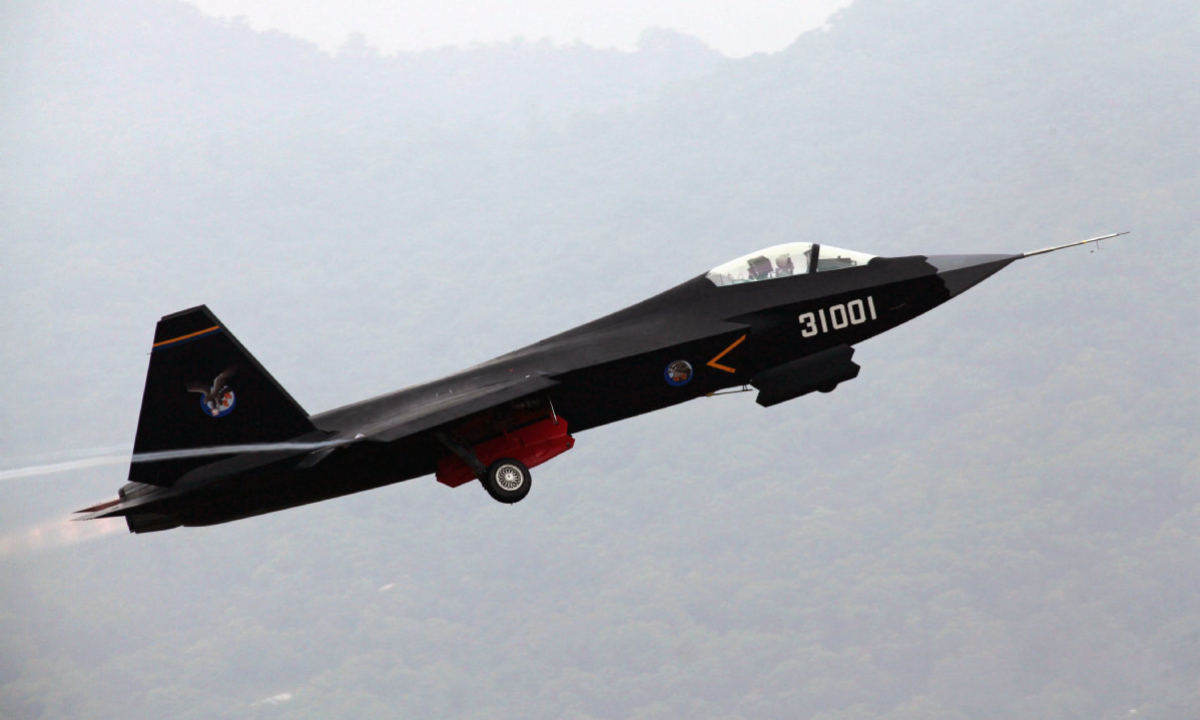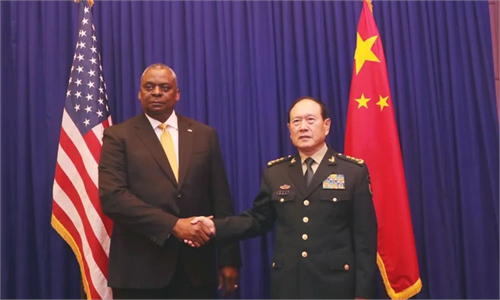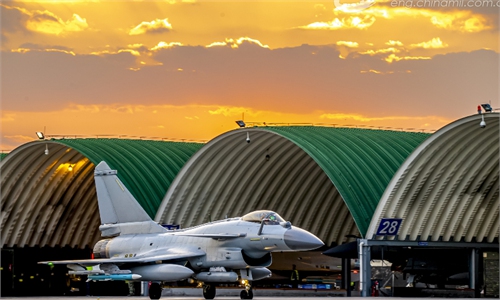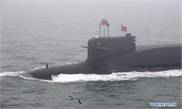
A Chinese FC-31 stealth fighter jet takes off during a demonstration flight ahead of the 10th China International Aviation and Aerospace Exhibition, also known as Airshow China 2014, in Zhuhai, Guangdong province, on Nov 10, 2014. Photo:Xinhua
China's aviation industry has started applying world-leading 3D printing technologies on new-generation warplanes, with 3D printed parts widely used on a newly developed aircraft that made its maiden flight not long ago, said a leading developer.
3D printed parts enjoy advantages including high structural strength, light weight, long service life, low cost and fast manufacturing, experts said on Saturday.
"We are applying 3D printing technologies on aircraft on a large scale at an engineering level, and we are in a world-leading position," Doctor Li Xiaodan, a member of the Luo Yang Youth Commando at Shenyang Aircraft Company's craft research institute, told China Central Television (CCTV) on Saturday.
With the growing demands of new-type warplane development in terms of weight reduction, lifespan extension, cost control and rapid response, previous production approaches reached a ceiling by 2013, and the Luo Yang Youth Commando was established to promote a breakthrough, CCTV reported.
The team is named after Luo Yang, head of production of China's J-15 carrier-based fighter jet who died of a heart attack brought on by overworking 10 years ago on November 25, 2012, after observing the country's first-ever aircraft carrier landing tests that featured the jet.
The Luo Yang Youth Commando made innovations with no reference and completely mastered the 3D printing technologies, also known as additive manufacturing, and it has been using the latest 3D printing equipment to produce components used by China's new-generation warplanes, CCTV reported.
"3D printed parts were widely used on a newly developed aircraft that has made its maiden flight not long ago," CCTV quoted Li as saying.
Compared with conventional manufacturing methods, which need to use rivets or welding to connect parts together, 3D printing builds an integrated part, which enjoys a higher structural strength, which also leads to a longer service life, Song Zhongping, a Chinese military expert and TV commentator, told the Global Times on Saturday.
It also enables manufacturers to use no extra materials, which makes the part lighter, Song said. Another advantage is that 3D printing is fast, and parts can be quickly manufactured, which makes logistics support simpler and less costly, he said.
The Shenyang Aircraft Company, a subsidiary of the state-owned Aviation Industry Corporation of China, is known as the cradle of Chinese fighters, having built main combat warplanes of the Chinese People's Liberation Army (PLA) from the country's first generation J-5 fighter jet to the modern J-15 carrier-based fighter jet and the J-16 multirole fighter jet.
It also developed China's second stealth fighter jet, the FC-31, which is available for export, and is also expected to be further developed into China's next generation carrier-based fighter jet, according to analysts.
3D printing technologies have now been implemented in major aircraft manufacturing factories of the Chinese aviation industry, making China a country to use such technologies on a large scale, the CCTV report said.
This means aircraft manufactured not only by Shenyang Aircraft Company, but also by other Chinese aircraft makers are using 3D printing technologies, observers said.




